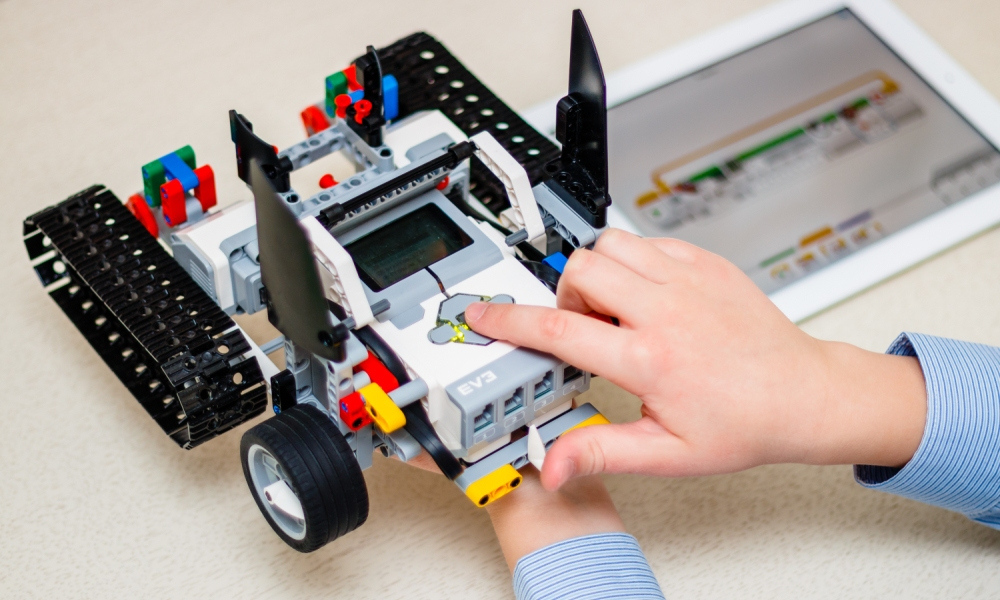In the first of a three-part series, Victorian educator Fiona Matthews shares her experiences in implementing the new Digital Technologies Curriculum in her school. In today's article, she shares more about the planning process they undertook and some of the initial challenges they identified.
The Digital Technologies Curriculum was formally introduced in Australia at the beginning of the 2017 school year, with all schools required to teach a new set of prescribed content and achievement standards.
The new curriculum focuses on computational thinking and problem solving skills, but also has students learning how to code and build purpose-design digital solutions to solve specific problems.
Whitefriars College, an all-boys school east of Melbourne, was one of two secondary schools selected to take part in a pilot program of the new Digital Technologies Curriculum before it was implemented across the state. The pilot, run by The Victorian Curriculum and Assessment Authority (VCAA) was called the AusVELS Digital Technologies Curriculum School Readiness Project.
Lead Coach of Learning, Teaching and Technology at the school, Fiona Matthews, says it was a great advantage to be able to work with the new curriculum before it had even been published. It allowed the staff to start their discussions early, plan and then experiment with the program at their own pace. Matthews says staff spent a great deal of time working on the strategic planning phase of this process, which meant that when the program was formally implemented at the beginning of 2017, they already had a solid understanding of where they were headed.
‘With the planning there are two stages,' she shares. ‘The first, from a planning point of view, you need to work out well. What are the units of work? What units are you actually going to run? When they're going to run? And the duration of the units and in terms of lessons per cycle – so, that's probably your more senior leadership.'
This first level of planning involved the school's Deputy Principal of Learning and Teaching and the Learning Leaders in the Science and Technologies faculty.
‘And then once the structures are in place,' Matthews explains, ‘then the planning is the curriculum itself, and then that's when you need to have those teachers who are going to be teaching it to become involved so that it's a shared philosophy.'
While they had a jumpstart on their Victorian school counterparts, the Whitefriars staff did encounter some hurdles on their journey. The first thing they had to consider was where to fit this new course into an already busy timetable. ‘Where do you get time in an already busy curriculum? Where does it fit into the curriculum pie? So, they were the initial discussions that we had,' Matthews explains.
The staff also originally planned to do semester-long units with three 75 minute lessons per cycle, but had to reconfigure this once they realised four 75 minute lessons were required.
The curriculum has been implemented in the school for almost three school terms, but Matthews says they're always working to continually improve their practice. In fact, the Digital Technologies team meet once a fortnight to iron out any issues that may arise. ‘At those meetings we're continually looking ahead, we're fine tuning, we're streamlining, we're discussing, we're coming up with shared resources, we're ensuring that everybody is maintaining that philosophy, that everybody is clear on what the objectives are of different tasks or what the learning outcomes are.
‘So, I think from a planning point of view, we haven't just stopped. We're continuing to plan, we're continuing to evolve, because we've got to ensure that, [for example], next year, the curriculum for the Year 8s builds on and supplements what we've already done.'
Stay tuned: In Part 2 of this series, Fiona Matthews will be sharing more details of the curriculum implementation process.
As a school leader, how do you work to involve all staff in the implementation of a new program? What are the advantages of taking a consultative approach to this process?
Matthews says that the staff continually meet to continue to iron out any issues and streamline their processes. How often do you set aside time to discuss how new programs are tracking? How do you ensure that everyone is clear on the objectives of these programs?



